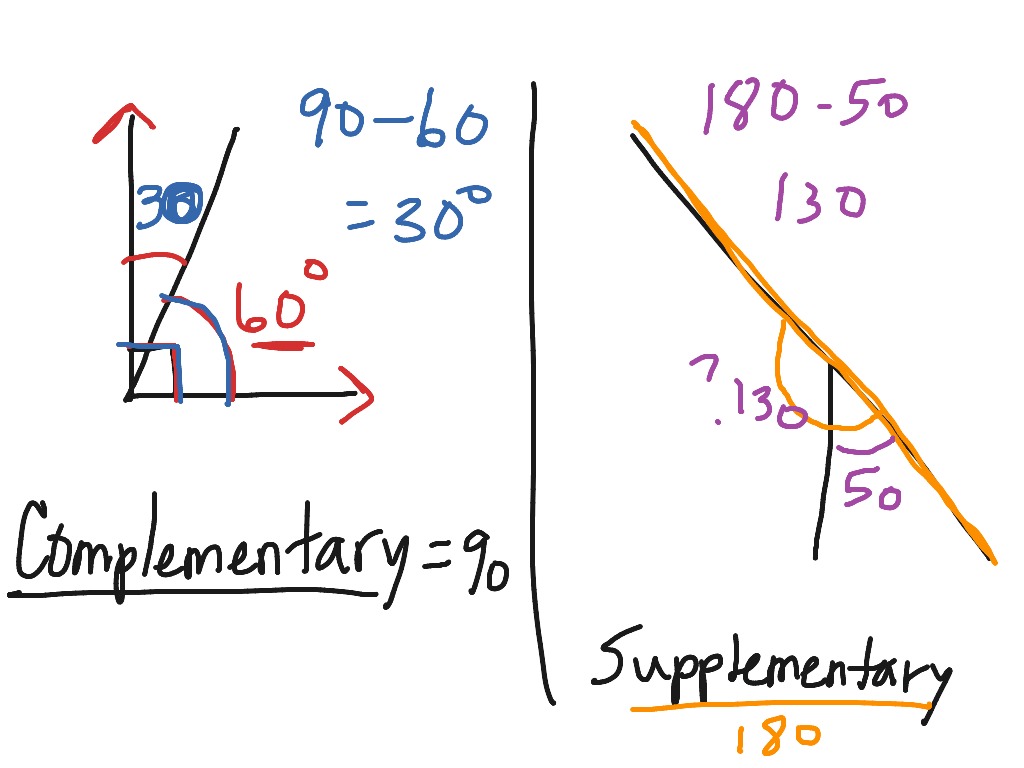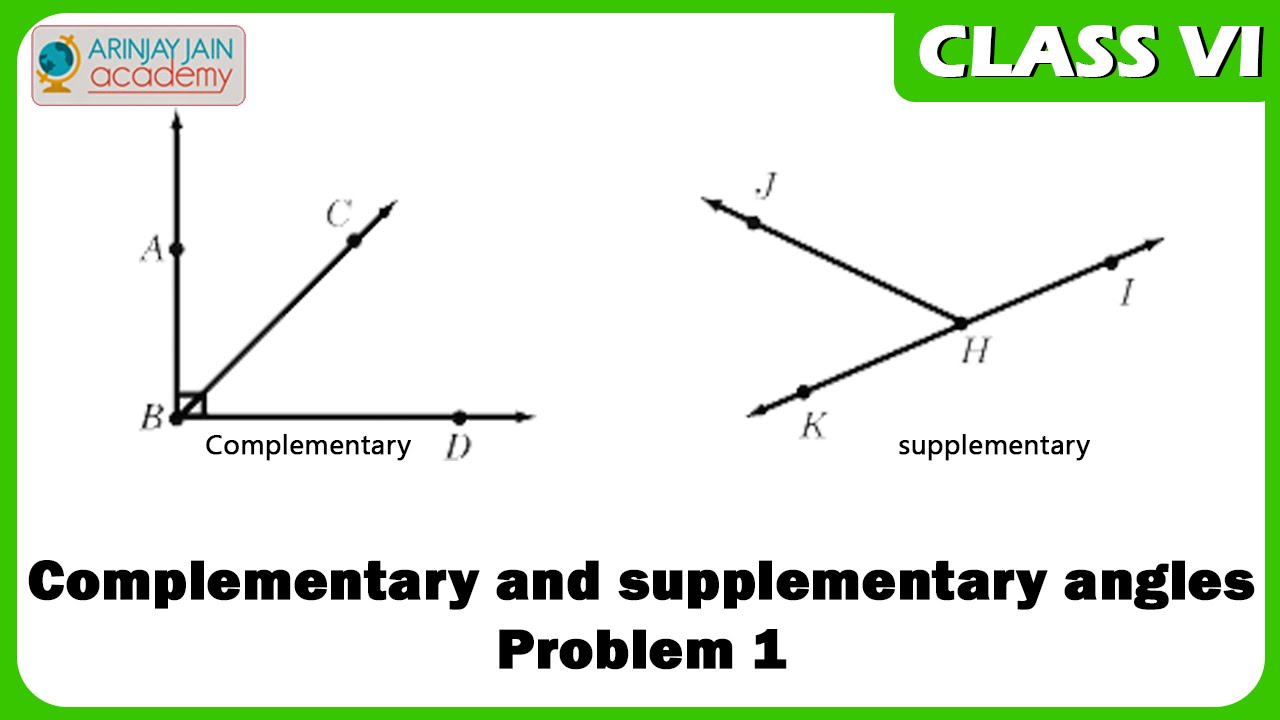

Hence when two supplementary angles are put together they form a ‘straight’ angle. Angles 60 and 120, for example, are supplementary because combining 120 and 60 yields 180. If one angle is known, its supplementary angle can be found by subtracting the measure of its angle from 180º. For example, two angles, 130 o and 50 o are supplementary because their sum, 130 o + 50 o 180 o.
#Example of supplementary angle plus
Hence when two complementary angles put together to form a ‘corner right’ angle. They arent equal, but what happens when we add them together 40 degrees plus 50 degrees is 90 degrees. The letter ‘c’ for ‘complementary’ and ‘c’ for ‘corner’.Then, by the definition of supplementary angles,Ĭomplementary vs Supplementary Angles Complementary AnglesĮach participating angle is complement of the otherĮach participating angle is supplement of the other Youll notice that when this pair of angles are adjacent. For example, 70 degrees and 110 degrees are supplementary. Let ∠POB is supplementary to ∠AOP and ∠QOB If the measures of two angles sum up to 18 0 180circ 180, they are called supplementary angles. When the sum of the measure of two angles is equal to 180 degrees, they are called supplementary angles. If they are adjacent they will form a straight angle. Similar to complementary angles, the two angles do not need to be adjacent. The word ‘supplementary’ came from the Latin word ‘supplere’ meaning ‘supply’. Each angle in the pair is said to be the supplement of the other. Two angles are called supplementary angles if the sum of their measure equals 180°. A staircase that have an escalation of 30° and the wall at 90°.Hands of a clock showing 3PM and the seconds hand pointing towards the digit 2.When a rectangular piece of bread is divided into two pieces by cutting along the diagonal, we get two right triangles, each with a pair of complementary angles.Hence Proved Real Life Examples of Complementary Angles Then, by the definition of complementary angles, Linear pairs are often used in the study of the exterior angles of polygons: In a triangle, an exterior angle is the sum of its two remote interior angles. This is a very simple problem to solve, and we can work out the supplement of 32 degrees using some basic algebra. In this example, we are trying to calculate the supplementary angle for the given angle of 32 degrees. If you have any doubts or queries regarding this topic, you can comment down below and we will be ready to help you.Let ∠ZOW is complementary to ∠XOZ and ∠YOW In the diagram below, ABC and DBE are supplementary since 30+150180, but they do not form a linear pair since they are not adjacent. A supplementary angle is the angle which produces a straight line of 180° when added to the given angle. supplementary angles 90 +90 180 supplementary angles 40+140 180. This Lesson (HOW TO solve problems on supplementary. Take for instance the diagram above, \angle AXN AXN and \angle NXF NXF are supplementary. Each angle is called a supplement of the other. You’ll notice that when this pair of angles are adjacent, they form a straight angle. answer choices Complementary Supplementary Neither Question 6 60 seconds Q. Supplementary Angles If the measures of two angles sum up to 180\circ 180, they are called supplementary angles.
#Example of supplementary angle how to
We hope this detailed article on Complementary and Supplementary Angles has helped you in your studies. Source code of HOW TO solve problems on supplementary, complementary or vertical angles - Examples. What are supplementary angles answer choices Angles that add up to 180° Angles that add up to 90° Angles that are equal to each other Angles that are opposite of each other when lines intersect Question 5 300 seconds Q. Maths Practice Questions for Class 11 & 12

You can also refer to the NCERT Solutions for Maths provided by academic experts at Embibe for your final or board exam preparation.įree Practice Questions and Mock Tests for Maths (Class 8 to 12) Opposite angles are equal (angles A are the same, and angles B are the same): Angle A and angle B add up to 180, so they are supplementary angles. Let \(\angle POB\) is supplementary to angles \(\angle AOP\) and \(\angle QOB\), Such that, Opposite sides are parallel: Opposite sides are equal in length.


 0 kommentar(er)
0 kommentar(er)
